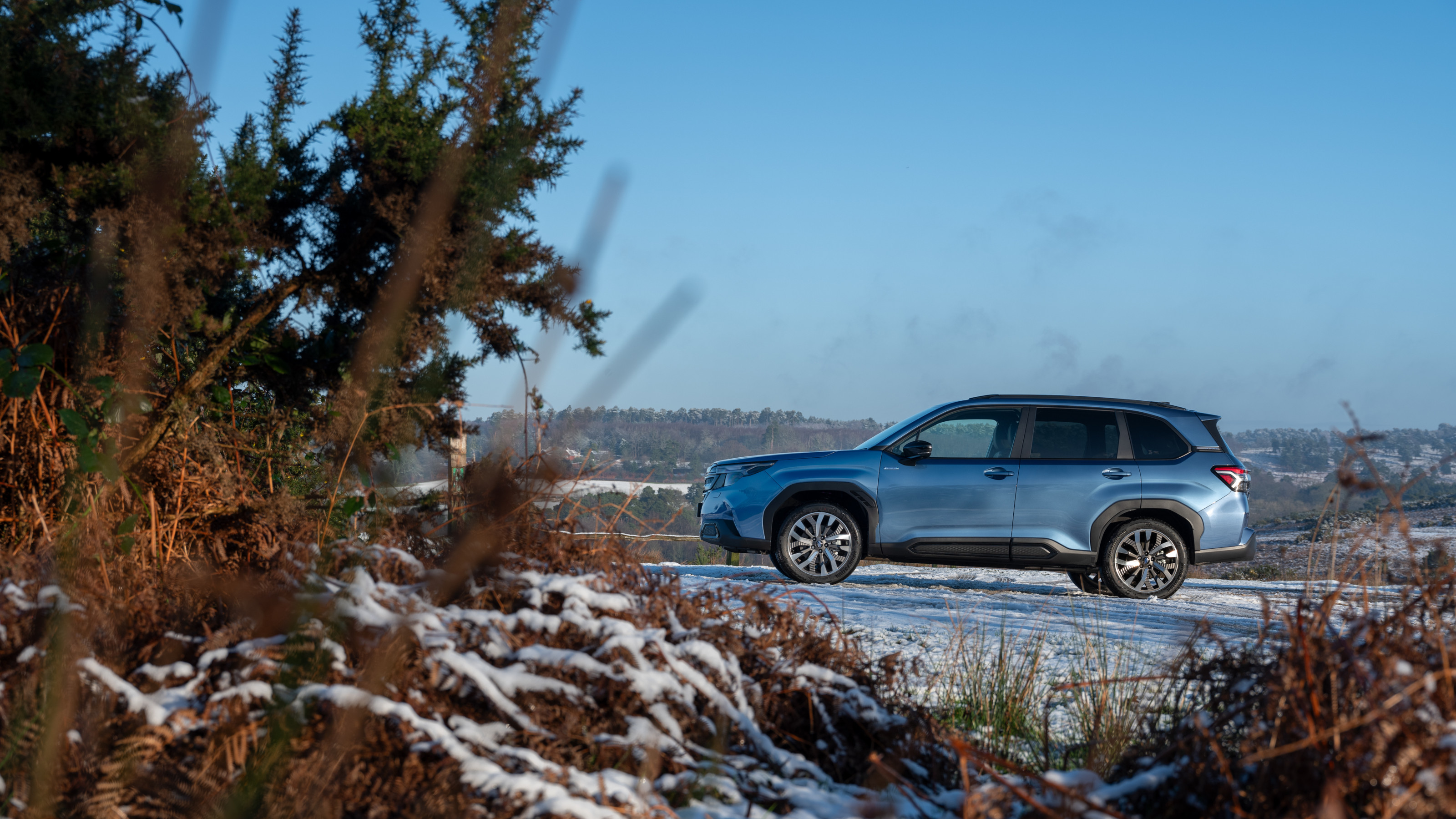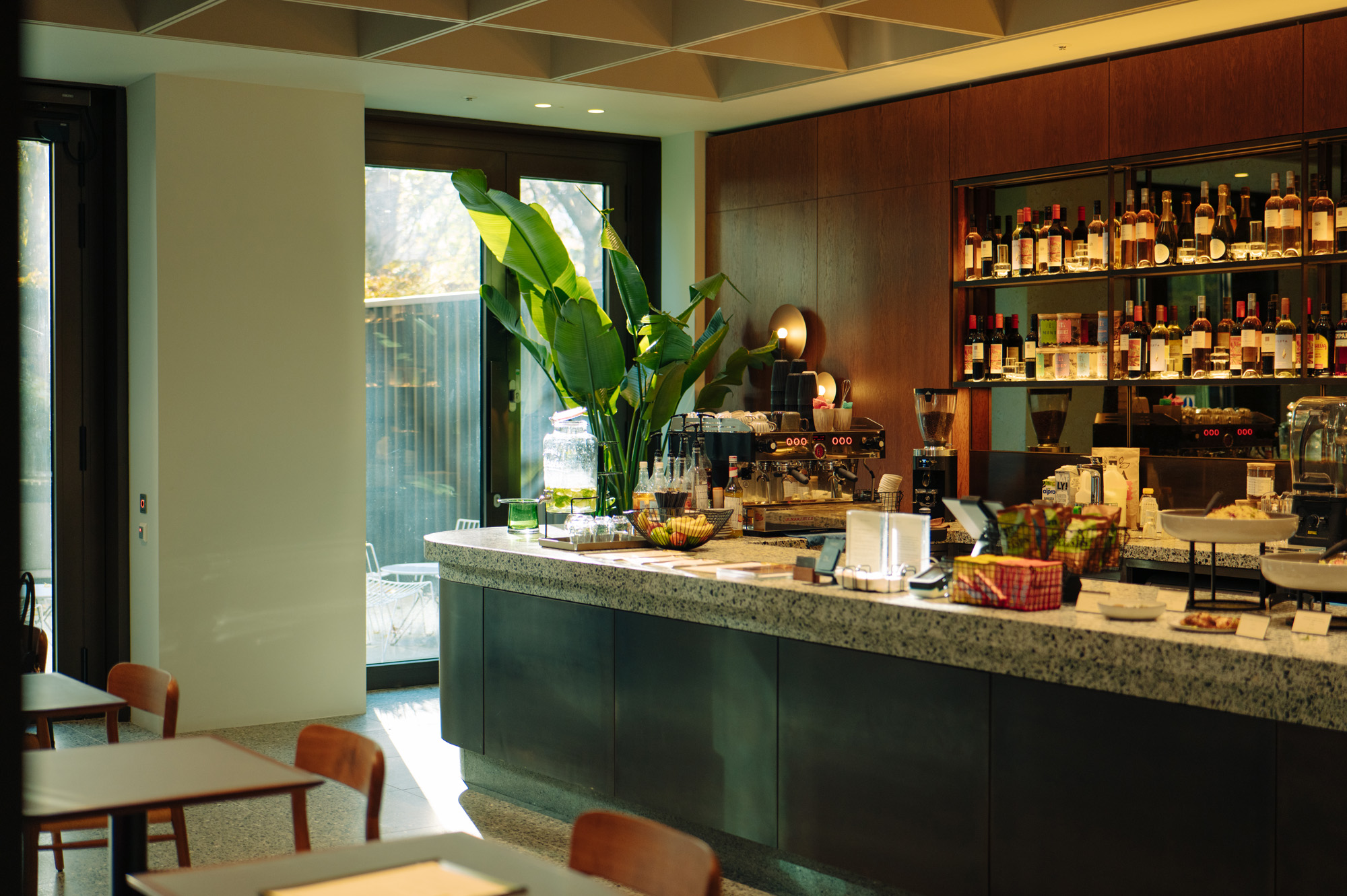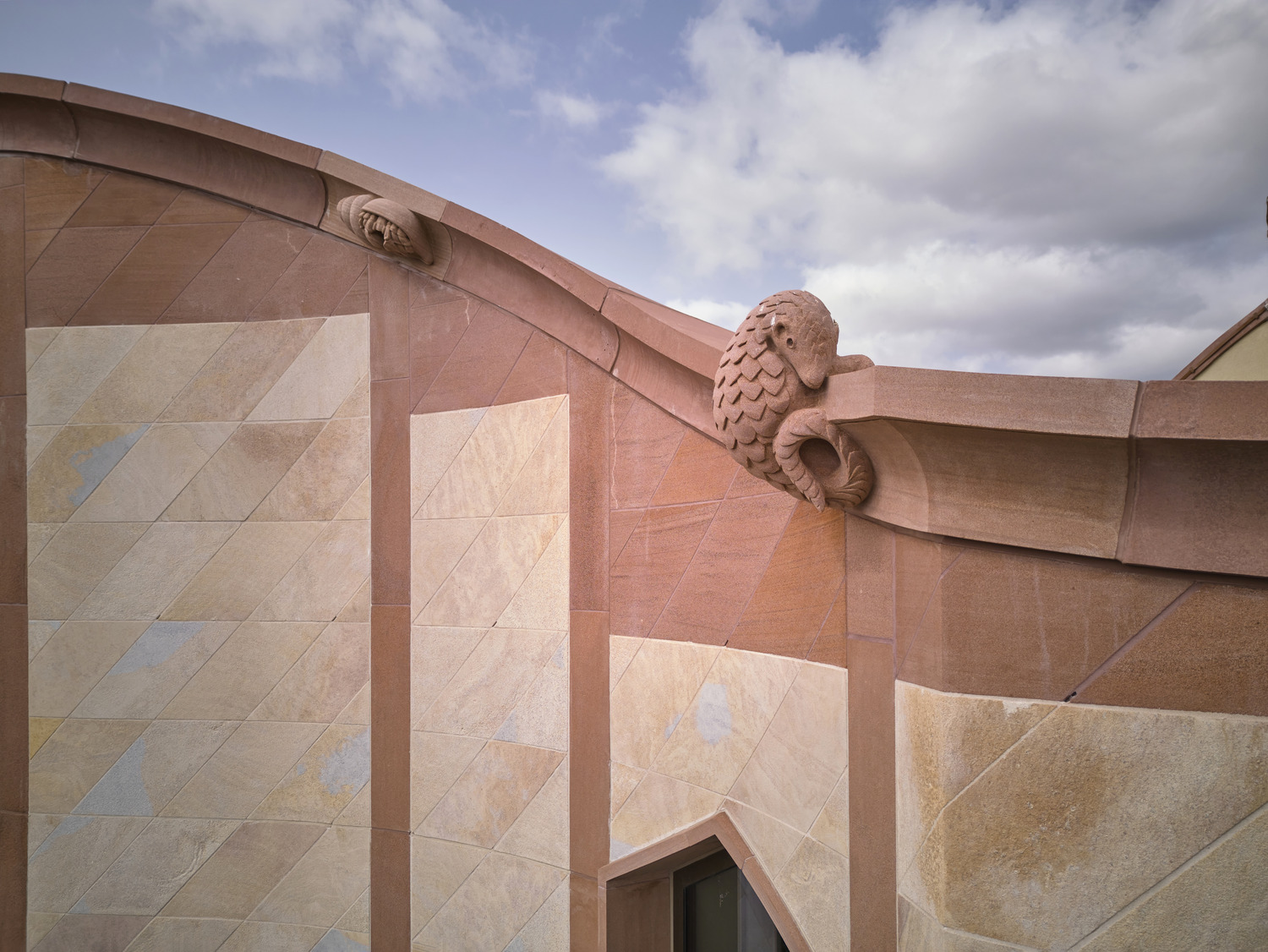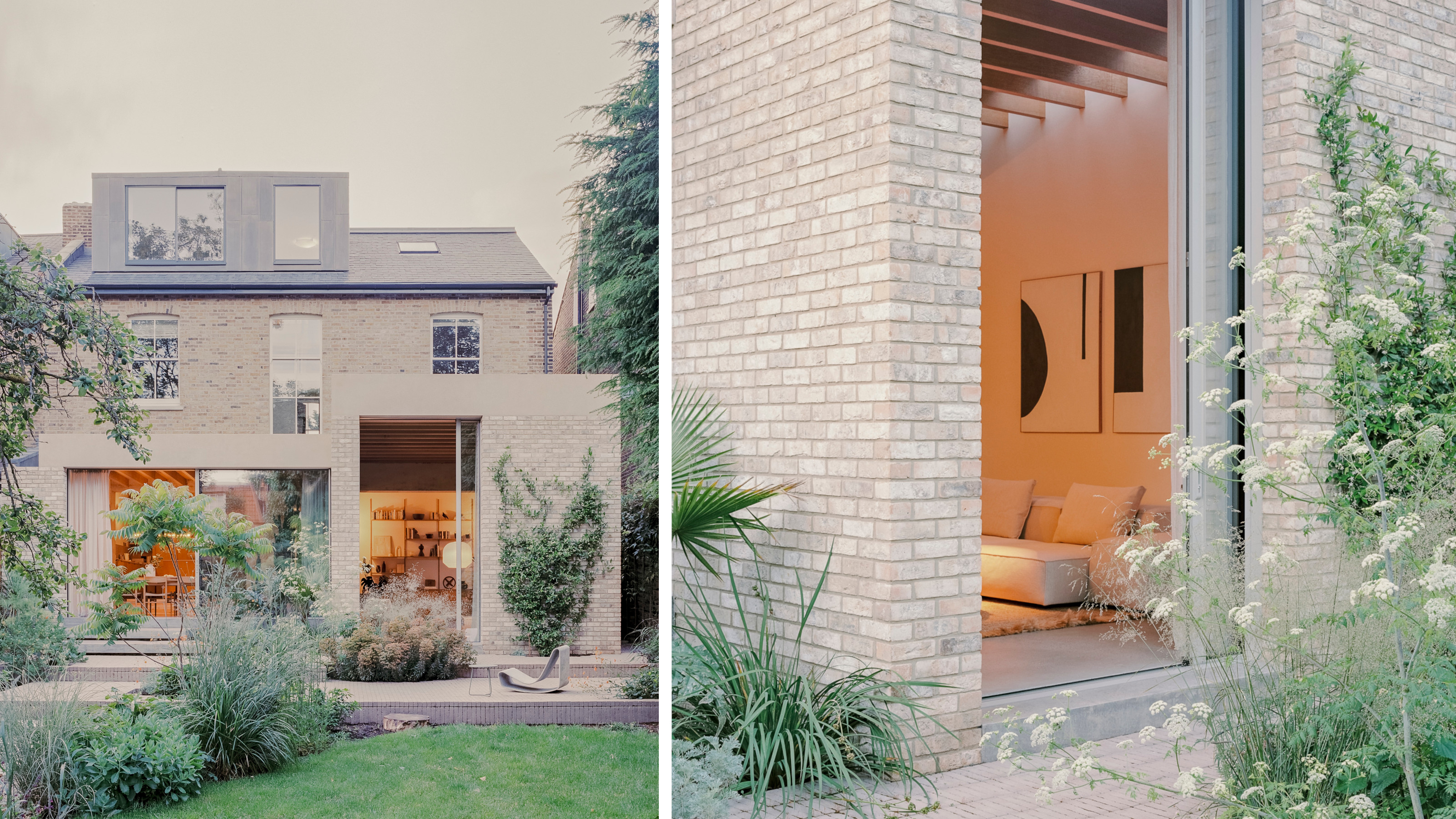Caruso St John and Marcus Taylor discuss the British Pavilion at 2018 Venice Architecture Biennale

Commissioned by the British Council and entitled ‘Island’, this year’s British Pavilion at the Venice Architecture Biennale promises to be a new, rooftop public space for Venice, as well as a powerful installation, and a platform for discussion that will offer opportunities for making connections and sparking lively debates. The curators, architects Adam Caruso and Peter St John of Caruso St John, and artist Marcus Taylor, wrapped the pavilion in scaffolding and placed a viewing platform on the top, aiming to create a piece that will be empty inside, in terms of physical things, but also full of ideas. We met with the curatorial team to discuss more.
W*: How would you describe your concept for the pavilion?
CSJ & MT: ‘Island’ is an equal collaboration between Marcus and ourselves, so it is as much an artwork as it is a piece of architecture. We’ve always been interested in art and enjoy working with artists. Artists have a broader, more intuitive way of working than architects, who are restricted by many conventions. It will be a different affair from most architecture biennales, and its effect more difficult to describe. Art shouldn’t be easy to understand, easy to describe, but just be somehow powerful and affecting. We hope that all the spaces of the pavilion will have that feeling.
W*: What was your main inspiration behind the pavilion’s design?
CSJ & MT: The word ‘Island” immediately makes you think of Venice, with its precarious relationship to the sea. And then of course, being the British Pavilion, it makes you think of Brexit and the current renegotiation of the nation’s position, with all its questions and uncertainties. The title also refers to many other things, including Shakespeare’s Tempest, where the protagonists are shipwrecked in a storm, and saved from drowning by being washed up on the beach of an unknown island, which turns out to be a paradise of sorts. So it is about being saved and lost at the same time. Finally, it refers to the constructed space we are making on the roof of the pavilion, a kind of raft which will have its own independence and serenity, lifted above the Giardini, with a beautiful view over the lagoon. The British Pavilion is, in a way, already a bit aloof, in its raised position at the end of the Giardini, on a little hill which is actually the highest piece of natural ground in Venice. The design will exaggerate this.
W*: What is the biggest challenge in designing a pavilion for the Venice Architecture Biennale?
CSJ & MT: We have been involved in past biennales so there were no big surprises. There are many countries and parties involved in the event, there are many negotiations and some of them can take a while, it is a bit like a mini-UN. Our neighbours, Canada, France and Germany were very understanding in accommodating our enlarged footprint.
W*: What do you think this design does that is different to other pavilions (British or otherwise)?
CSJ & MT: In the past few Architecture Biennales, the British Pavilion has held curated exhibitions on architectural themes. So we have taken a different approach for a change. There will be no exhibits; instead we have made a construction that can be experienced like a building. Its public nature is very important, that you are free to wander about, to meet people and participate or not. There will be a programme of events and performances but also, like any open space, you don’t know how it will be used. It will be a dramatic space to be in, whether it is busy or empty.
W*: What would you like the pavilion’s legacy to be?
CSJ & MT: The proposal has several dimensions; the construction of spaces that you can visit, the discussions and performances that will take place there, the publication with its texts, imagery and poetry, and photographs that will be taken of it. Through all these different impressions the themes are exposed. We hope that even people who don’t get to visit it but see it in the media will discuss it and have their own idea of its provocation.
W*: Do you have a favourite project from previous Biennale’s?
CSJ & MT: A favourite is Aldo Rossi’s floating theatre, the Teatro del Mondo, that was made for the first Architecture Biennale in 1979. It was made with scaffolding and wood also. Moored opposite the Piazza San Marco, it was an extremely evocative image, like a dream version of the city. From a distance all the buildings and little islands in Venice look as if they are floating on the sea. Being on the pavilion rooftop will be a bit like that too.
W*: How did your collaboration come about?
CSJ & MT: We first met Marcus and his partner, Rachel Whiteread at the Stirling Prize award ceremony in 2016. The practice had just won the prize for the Newport Street Gallery so, feeling confident, we approached Marcus and Rachel to collaborate on the competition for the United Kingdom Holocaust Memorial next to the houses of Parliament. Our team was shortlisted for the competition but sadly did not win. However, the experience of working together was very positive so when Marcus approached us with a fantastic idea for the British Pavilion we were very happy to team up again for the open submission.
See all the latest news and stories from Venice Architecture Biennale here

More inspiration for the team; a painting of The Tempest, Act II Scene 2, where Caliban, Stephano and Trinculo dance on the seashore, created by Johann Heinrich Ramberg
INFORMATION
For more information visit Caruso St John’s website and the British Council’s website
Wallpaper* Newsletter
Receive our daily digest of inspiration, escapism and design stories from around the world direct to your inbox.
Ellie Stathaki is the Architecture & Environment Director at Wallpaper*. She trained as an architect at the Aristotle University of Thessaloniki in Greece and studied architectural history at the Bartlett in London. Now an established journalist, she has been a member of the Wallpaper* team since 2006, visiting buildings across the globe and interviewing leading architects such as Tadao Ando and Rem Koolhaas. Ellie has also taken part in judging panels, moderated events, curated shows and contributed in books, such as The Contemporary House (Thames & Hudson, 2018), Glenn Sestig Architecture Diary (2020) and House London (2022).
-
 Ligne Roset teams up with Origine to create an ultra-limited-edition bike
Ligne Roset teams up with Origine to create an ultra-limited-edition bikeThe Ligne Roset x Origine bike marks the first venture from this collaboration between two major French manufacturers, each a leader in its field
By Jonathan Bell
-
 The Subaru Forester is the definition of unpretentious automotive design
The Subaru Forester is the definition of unpretentious automotive designIt’s not exactly king of the crossovers, but the Subaru Forester e-Boxer is reliable, practical and great for keeping a low profile
By Jonathan Bell
-
 Sotheby’s is auctioning a rare Frank Lloyd Wright lamp – and it could fetch $5 million
Sotheby’s is auctioning a rare Frank Lloyd Wright lamp – and it could fetch $5 millionThe architect's ‘Double-Pedestal’ lamp, which was designed for the Dana House in 1903, is hitting the auction block 13 May at Sotheby's.
By Anna Solomon
-
 This 19th-century Hampstead house has a raw concrete staircase at its heart
This 19th-century Hampstead house has a raw concrete staircase at its heartThis Hampstead house, designed by Pinzauer and titled Maresfield Gardens, is a London home blending new design and traditional details
By Tianna Williams
-
 An octogenarian’s north London home is bold with utilitarian authenticity
An octogenarian’s north London home is bold with utilitarian authenticityWoodbury residence is a north London home by Of Architecture, inspired by 20th-century design and rooted in functionality
By Tianna Williams
-
 What is DeafSpace and how can it enhance architecture for everyone?
What is DeafSpace and how can it enhance architecture for everyone?DeafSpace learnings can help create profoundly sense-centric architecture; why shouldn't groundbreaking designs also be inclusive?
By Teshome Douglas-Campbell
-
 The dream of the flat-pack home continues with this elegant modular cabin design from Koto
The dream of the flat-pack home continues with this elegant modular cabin design from KotoThe Niwa modular cabin series by UK-based Koto architects offers a range of elegant retreats, designed for easy installation and a variety of uses
By Jonathan Bell
-
 Are Derwent London's new lounges the future of workspace?
Are Derwent London's new lounges the future of workspace?Property developer Derwent London’s new lounges – created for tenants of its offices – work harder to promote community and connection for their users
By Emily Wright
-
 Showing off its gargoyles and curves, The Gradel Quadrangles opens in Oxford
Showing off its gargoyles and curves, The Gradel Quadrangles opens in OxfordThe Gradel Quadrangles, designed by David Kohn Architects, brings a touch of playfulness to Oxford through a modern interpretation of historical architecture
By Shawn Adams
-
 A Norfolk bungalow has been transformed through a deft sculptural remodelling
A Norfolk bungalow has been transformed through a deft sculptural remodellingNorth Sea East Wood is the radical overhaul of a Norfolk bungalow, designed to open up the property to sea and garden views
By Jonathan Bell
-
 A new concrete extension opens up this Stoke Newington house to its garden
A new concrete extension opens up this Stoke Newington house to its gardenArchitects Bindloss Dawes' concrete extension has brought a considered material palette to this elegant Victorian family house
By Jonathan Bell